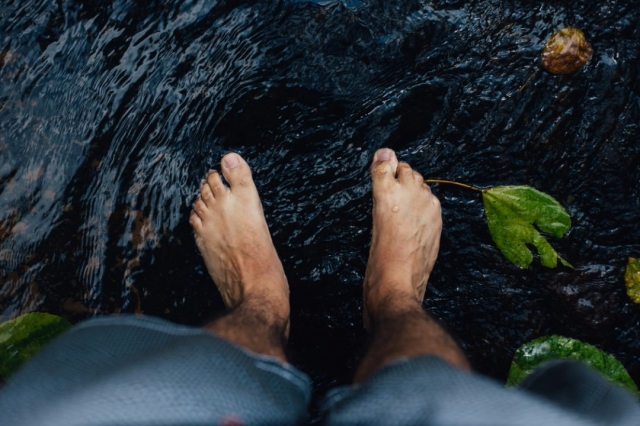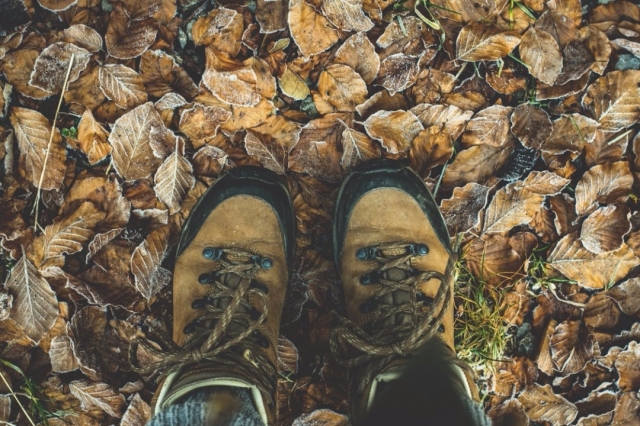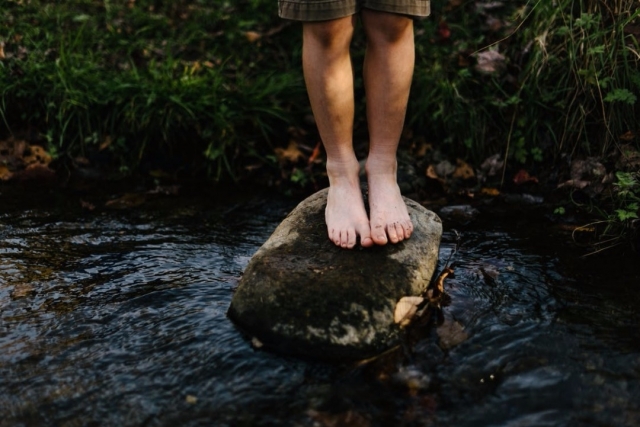Camino de Santiago: How to take care of your feet
Your feet are one of the most important things that you have to take care of when you walk the Camino de Santiago or they will stop you
Take care of your feet as you walk the Camino de Santiago
When we set out to prepare the Camino de Santiago, all the pilgrims are concerned with going over every detail of the route that we are going to go through, calculating the luggage to the millimeter, choosing the perfect backpack and weighing it full or making sure to wear warm clothing and The hot days. However sometimes we forget one of the most important things: the feet, the two fundamental pillars on which it depends that we arrive in the best possible conditions to Santiago de Compostela or we have to erase the match at rest.
The feet must be taken care of and attended to before and after each stage and know how to cure them if blisters, scrapes or tendinitis appear, in which case you have to seek the help of professionals.
Footwear and equipment on the Camino de Santiago
Our intention is not to recommend a specific footwear to make the Camino de Santiago, as we already did a few months ago. Trekking shoes, boots, mountain sandals ... all are suitable and depends a lot on the type of terrain that we are going to walk and especially the time of year. In what we do want to insist, although you've heard it many times, is that you do not set out to do the Camino de Santiago with new footwear, a very common mistake that can make the experience worse and also with shoes too worn, with The stencil or deteriorated interior. As far as size is concerned, we can never get the right footwear: we must make sure when choosing that the toes do not touch the bottom of the shoe, and can insert a finger behind the ankle if we stick the foot forward.
The reason for not wearing shoes on the Camino is the same why an athlete does not release running shoes in a marathon. During the tens or hundreds of miles that you are going to walk walking, you are going to take a lot of steps, and a rigid footwear will happen to you sooner or later. The best idea is to use used footwear, at least released two or three months before launching the Camino, and much better if you train with him taking long walks during this period of preparation. The training is also highly recommended to accustom to the feet to the routine of walking many kilometers and thus reduce the appearance of blisters. It is customary for them to appear on pilgrims who have not spent time preparing themselves.
Another fundamental element of our equipment are the socks, which under no circumstances should be made of cotton, but of synthetic material and without seams. The feet have to perspire and the cotton does is soaking without letting the heat out and creating moisture, which favors the blisters. When it comes to putting on the shoes before each stage, it is necessary to check well that there are no wrinkles in the socks so that no cracks appear, something that helps that the socks do not have seams. Many pilgrims also advise to apply Vaseline on the soles of the feet and between the toes before putting on the socks to avoid chafing
What to do before the blisters?
The blisters on our feet when walking are the result of the continuous rubbing of the shoes or of excessive moisture inside the sock by sweating (for example if our shoes are not of the right material). Although not always the usual, if we are lucky, we can catch the blisters in time while we walk to avoid going to more. In this case, for example if we notice the first discomfort in the middle stage, it is best to combat them provisionally with a Compeed-type self-adhesive pharmacy patch, gauze or applying vaseline in the area to relieve the friction.
But unfortunately in most cases, when we realize the blister has already formed. To prevent the blister from getting bigger and spoil the Camino, you have to prick it to remove the liquid from its interior, never cut the skin since walking without that natural protection will become impossible. If we decide to puncture the blister ourselves and not go to a medical clinic (because we are far from one, for example) we must do it under the best hygienic conditions that we can to avoid ending up infecting.
For this we need a disinfected needle (with a lighter for example), polyvidone iodine (Betadine) and a sewing thread. First of all you must clean the area of the blister with clean hands; Do not try to prick it with all the accumulated sweat of the day without going through the shower before, because it can easily infect you. The ampoule must be punctured very carefully and the liquid dried, for example, with a gauze; When we have extracted everything, we must apply betadine inside the blister and prick it on the opposite end. With the entire area cleaned with betadine, we thread a thread with the needle, insert it through a hole and pull it out the other. In this way the thread will drain the liquid produced by the ampoule until it dries and falls after several days.
What experiences do the pilgrims have with their feet?
These are the tips that some veteran pilgrims on social networks have kindly left us:
Francisco Javier: Antes de caminar una capa de vaselina en todo el pie (incluido entre los dedos) si por el camino te encuentras algun riachuelo y llevas algunos km ya echos descalzate y pon las plantas en el agua y posteriormente poner hacia arriba despues de hacerlo varias veces volver a calzarte (sentiras mucho alivio )tanto en el trascurso de la etapa como al final estirar bastante las piernas y gemelos y por ultimo despues de la ducha una buena crema hidratante !!! Asi todos los dias y se llevara un camino bastante bien en cuanto a estado de las piernas !!!
Pilar: En dos años que lo he hecho y no he tenido problemas. Llevaba 2 pares de zapatillas usadas, cada dia cambiaba. Por las noches despues de la ducha me "fregaba" los pies con alcohol de romero. Por las mañanas me ponia tiritas de COOMPED en las zonas que pensaba que podria tener rozaduras o ampollas y luego me untaba todo el pie con vaselina, mucha, y el calcetin encima. A media mañana cuando parabamos un rato a comer algo, me quitaba zapatillasy calcetines y dejaba el pie un poco al aire. Luego vaselina y calcetin y seguir marcha. Esto me lo recomendo un experto y me ha ido siempre fenomenal. Cero dolor, cero ampollas......Ah ! Calcetines sin costuras.
Maria: No lavarlos con agua caliente antes de iniciar la ruta. Usar calcetines sin costura. Ahora hay gran variedad. Lubricarlos bien con vaselina antes de empezar cada ruta. Si hace calor refrescamos con agua fría ( hay muchos riachuelos por el Camino) y volver a colocar vaselina. Y claro, cambiar calcetines.
Alberto: Vaselina antes de empezar, poner calcetines secos cada 10kms y más vaselina, quitarse las botas cada vez que te pares para que los pies respiren. Botas con Goretex transpiran pero sólo un poco, con calor se suda mucho. Si no llueve lo mejor son zapatillas buenas de correr o sandalias de trekking. Al acabar, después de ducharte un buen masaje con crema para los pies.
Routes
Blog
 How to get to Sarria to do the Camino de Santiago
How to get to Sarria to do the Camino de Santiago
 Descubre la magia del Camino de Santiago Portugués por la costa
Descubre la magia del Camino de Santiago Portugués por la costa
 5 tours culturales que puedes hacer en Galicia si decides hacer un alto en el camino
5 tours culturales que puedes hacer en Galicia si decides hacer un alto en el camino
 Doing the Camino de Santiago in June: What you should know?
Doing the Camino de Santiago in June: What you should know?
Information
Points of interest
Cities & Towns | Hostels | Lodgings | Restaurants | Saddlery | Doctors | Points of interest | Bikes workshop
Contact us | Privacy policy | Cookies policy | | Terms of use | Authorship | Web Map | Consentimiento
© Copyright LA VOZ DE GALICIA S.A. Polígono de Sabón, Arteixo, A CORUÑA (ESPAÑA) Inscrita en el Registro Mercantil de A Coruña en el Tomo 2438 del Archivo, Sección General, a los folios 91 y siguientes, hoja C-2141. CIF: A-15000649
Developed and managed byHyliacom


